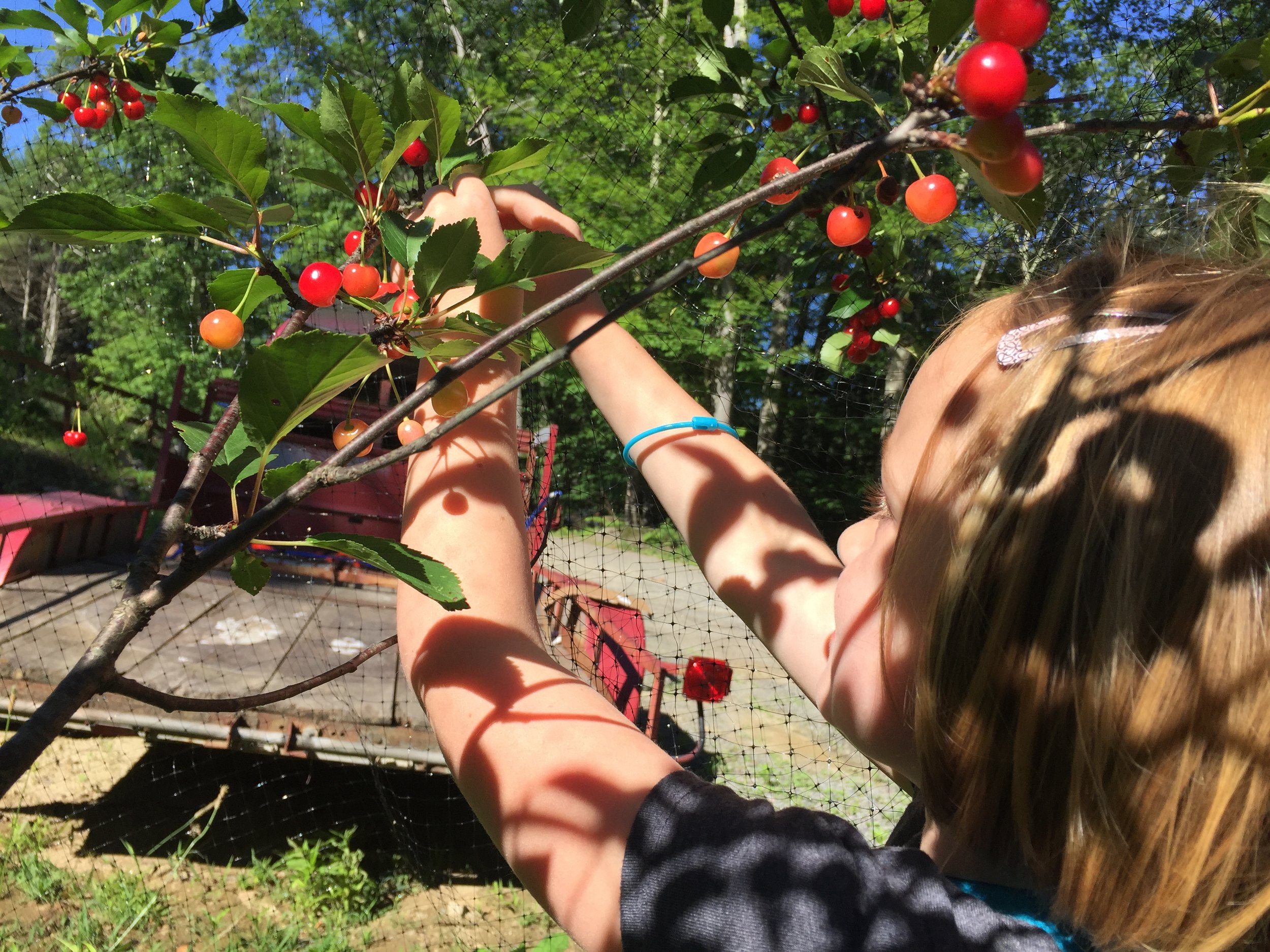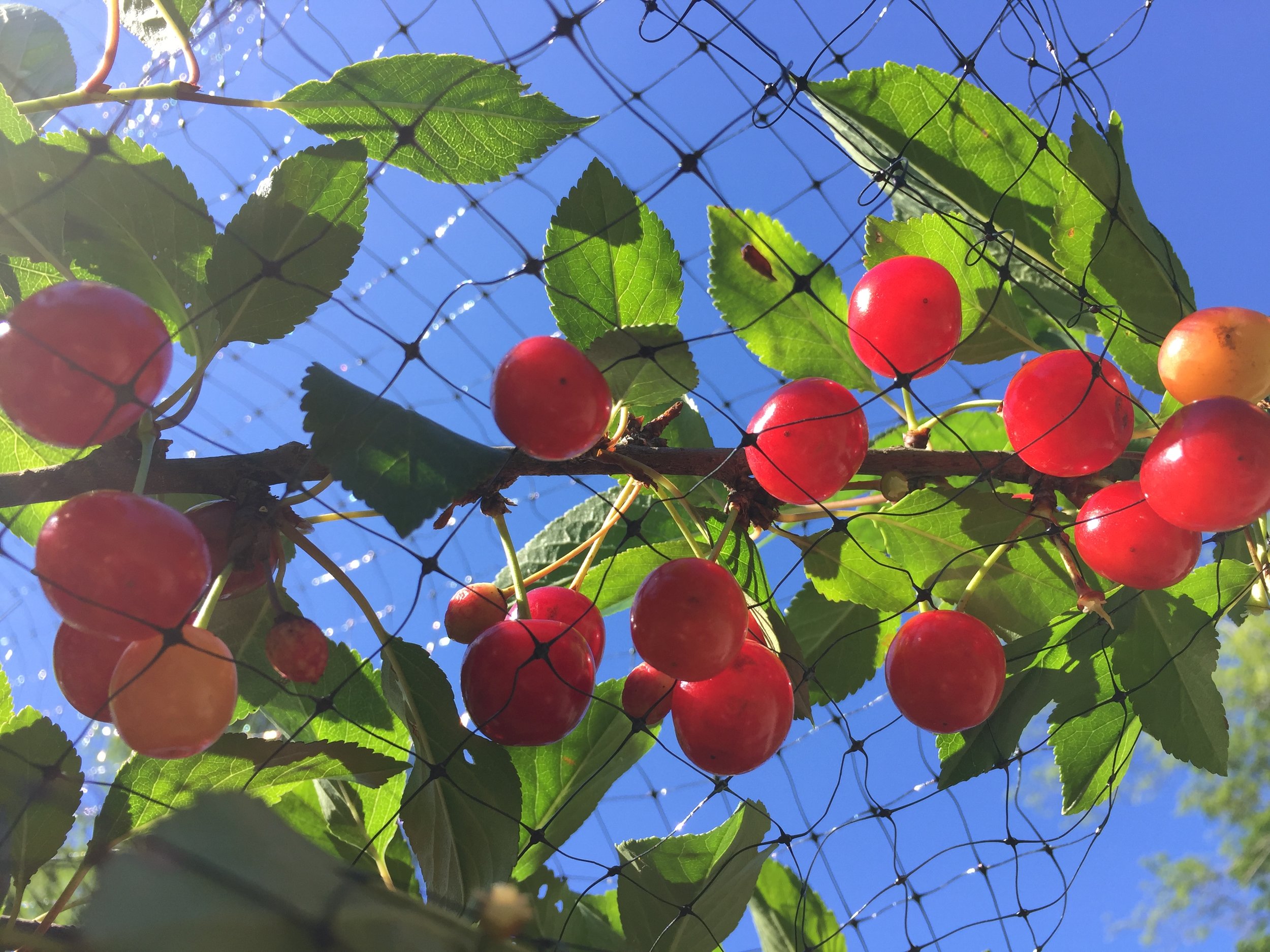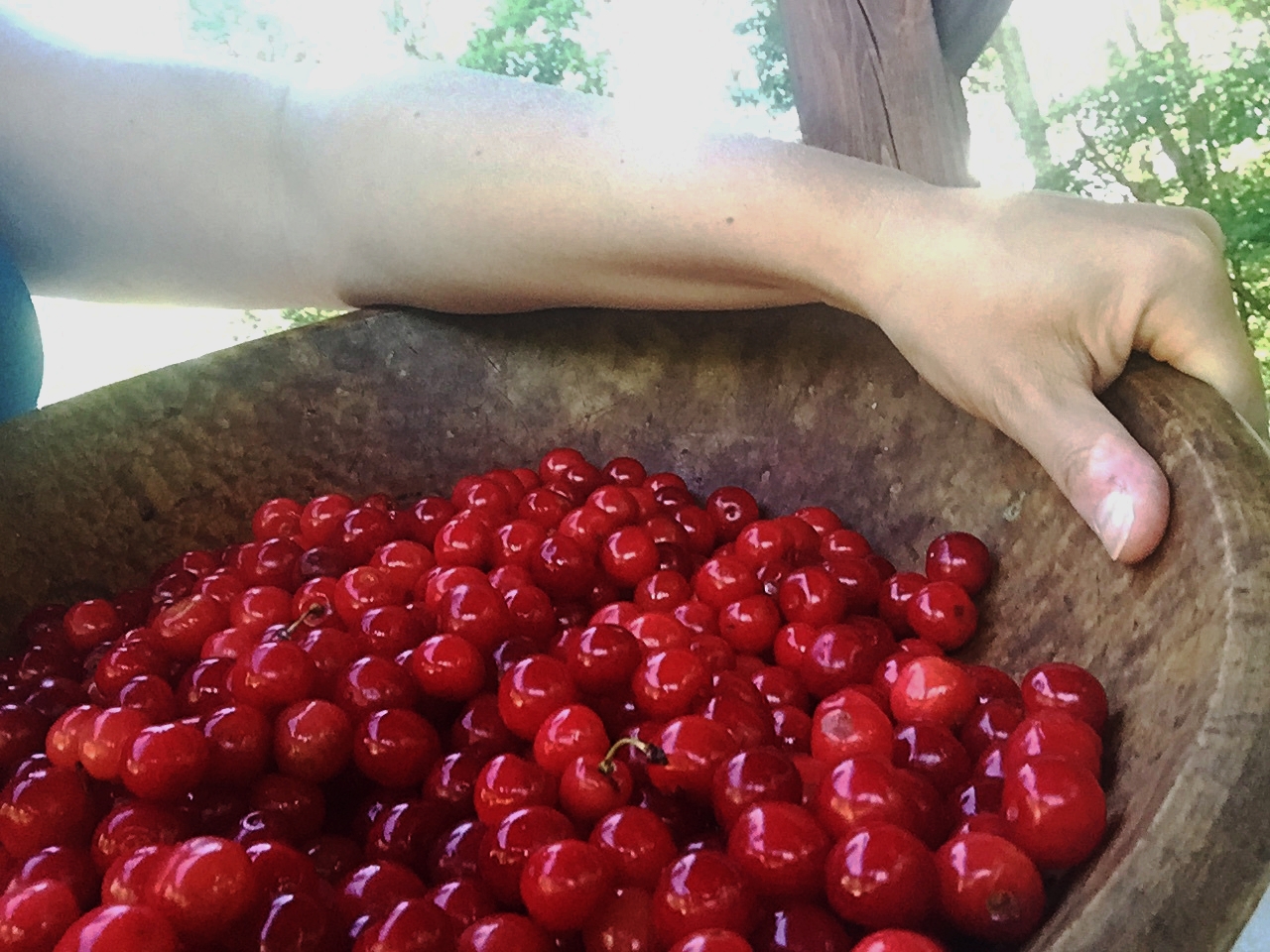These lovely all natural colored skeins of wool yarn were made from the wool of our own Babydoll Southdown sheep! Babydoll Southdown sheep fleeces can be made into beautiful wool for lots of different kinds of wool projects. When we started our small flock, we were definitely thinking ahead to the future wool we would be crafting with. Like everyone on the farm, the babydolls have many jobs on the farm, including mowing between the grapevines and fertilizing as they munch. Their wool is a bonus for us, and I am thinking particularly welcomed for them, as they get pretty wooly and need fresh hair cuts each spring.
First, of course, is the shearing. We knew we wouldn't have time to do this ourselves (or the time to learn how to shear). We were lucky enough to have friends who led us to a family owned, "we come to you" sheep shearing service . The father of the business was teaching his sons the trade. This year, two of the sons came to shear our six lovely ladies. I was working at the Farm Store that morning when they stopped by and asked if they could drive up and start the shearing. They headed up, and came right back down a few minutes later. I knew they couldn't possibly be done already. One of the kids looked at me and said, "is the dog going to let us touch the sheep?". I had forgotten that Hughy was in the pen with the sheep instead of being right outside. Of course, Hughy is a ferocious dog when it comes to bears and coyotes, but for humans, he is just one big white teddy bear. Of course Hughy will let them touch and shear the sheep! He just might want to nuzzle and snuggle all the while.
The Babydolls get pretty woolly come spring. Their eyes are almost not visible through all of the fleece. Babydoll sheep are very gentle and not aggressive. In order to shear them, the shearers sit them up and lean them back like they are sitting in a lounge chair. Immediately, the baby dolls practically go to sleep and let the shearers move them all around and do the business of shearing off their fleeces. They might not like the process of getting the wool removed from their skin, but when it is over, they must feel like a million bucks!
Babydoll sheep are short and small in stature, about 18-24 inches tall. We saved their fleeces for a number of years, before we had enough to bring to the mill for cleaning, carding and spinning. We researched small family owned mills for the perfect fit. We needed a small mill that would procees our fleeces seperate from others so that we only received our own sheep wool. Larger fiber companies can't guarantee that they can keep your fleece seperate. This was important to us. We wanted to be able to label our crafts as being fashioned with the wool from our sheep.
Still River Mill in Eastford Connecticut
Still River Mill's Cashmere Goat
We found Still River Mill. The Still River in Eastford Connecticut has historically serviced many woolen mills, starting in the 1800's. The Still River Mill is a family owned business started in 2004. Greg and Deirdre, the owners, raise sheep and goats on their small farm in the village of Eastford and have over 15 years of experience working with a number of different animal fibers.
Greg and Deirdre wrote, "Our aim is to conform to organic wool processing practices and standards. This means using environmentally friendly, low impact and organic detergents for scouring, organic processing oils, water soluble grease and oil to lubricate the machines and using appropriate treatment of waste water."
We knew that our wool would be safe and be safe for us to use in their trusted hands. They also take care to keep fleeces seperate as they work with them, so we knew that this was the mill for us!
Carding Machine at Still River Mills
To process the wool, the fibers are first cleaned and then carded. The carding machine basically combs the wool to remove any additional dirt or twigs missed during the cleaning process. The carding machine keeps combing the fibers until the fleece is turned into fluffy fiber roving or batts. The roving can then be spun into skeins of yarn. Baby doll wool is in the 19 to 22 micron range, very near to that of cashmere, so it can be used for wool projects which can be worn close to the skin and won't be itchy or uncomfortable. Some of our wool from the baby dolls was not of very high quality, so taking their advice, we elected to keep some as batting which can be used to stuff our handmade wool crocheted animals or can be used in our needle felting projects- our animal on a pinecone series of Christmas ornaments. Some of the wool was kept its natural color and spun into thick, beautiful yarn skeins. Other wool, suitable for spinning, was left as roving. This roving, I am hoping will allow for my friend to teach me the art of spinning!
Strand of Yarn at Still River Mills
Strand Machine at Still River Mills
Not only am I excited for trying my hand at dyeing and spinning the wool, but I am also thrilled to be able to craft using the wool from our baby doll sheep. I look forward to crocheting and needle felting using our wool all winter long. It may not seem like anything too exciting, but for us, growing something from seed, making something from scratch, or crafting with something that we have taken care of, nurtured, helped birth, fed, watered and sheared is pretty cool.























